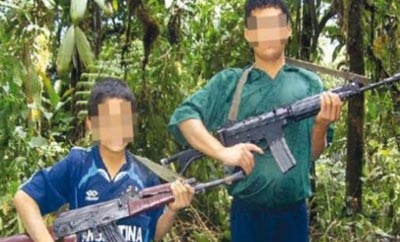Security forces have rescued two children from the Shining Path guerrillas in Peru, drawing attention to the recruitment practices that have enabled the rebels to survive despite being severely weakened by years of military pressure.
The children, aged 9 and 11, were rescued thanks to intelligence that helped the army locate them in the province of Tayacaja, in the Huancavelica region of Peru.
The military immediately provided the minors with food and medical aid, as the pair were in found in a terrible physical state, reported local newspaper Correo de Prietto.
InSight Crime Analysis
The two children were discovered on the edge of the region known as the VRAEM — the Apurimac, Ene and Mantaro River Valley. The VRAEM is the heartland of the remaining faction of the Shining Path, which has utilized the zone’s lack of state presence and criminal opportunities — particularly from drug cultivation and trafficking — to take refuge from the security forces and finance their operations.
Conditions in the VRAEM have been one key to the Shining Path’s survival. Another, as illustrated by the case of the two children, has been their recruitment policy and support network.
The guerrillas, who are currently estimated to count on 130 active fighters, have maintained their numbers by recruiting extremely young children — known as pioneros (pioneers) — and grooming them for a career in the insurgency. As they are initially recruited at an age where they will be of little use in combat, the children work with and are cared for by the Shining Path’s extensive support network, which runs throughout the villages of the VRAEM, where the rebels hold more sway than the state.
This tactic is also being taken up by other guerrilla movements in Latin America, in particular the Revolutionary Armed Forces of Colombia (FARC). Hit hard by years of military actions and desertions, the FARC have taken to focusing their recruitment efforts on minors from families of sympathizers and from regions where they — not the Colombian state — are the authorities.

